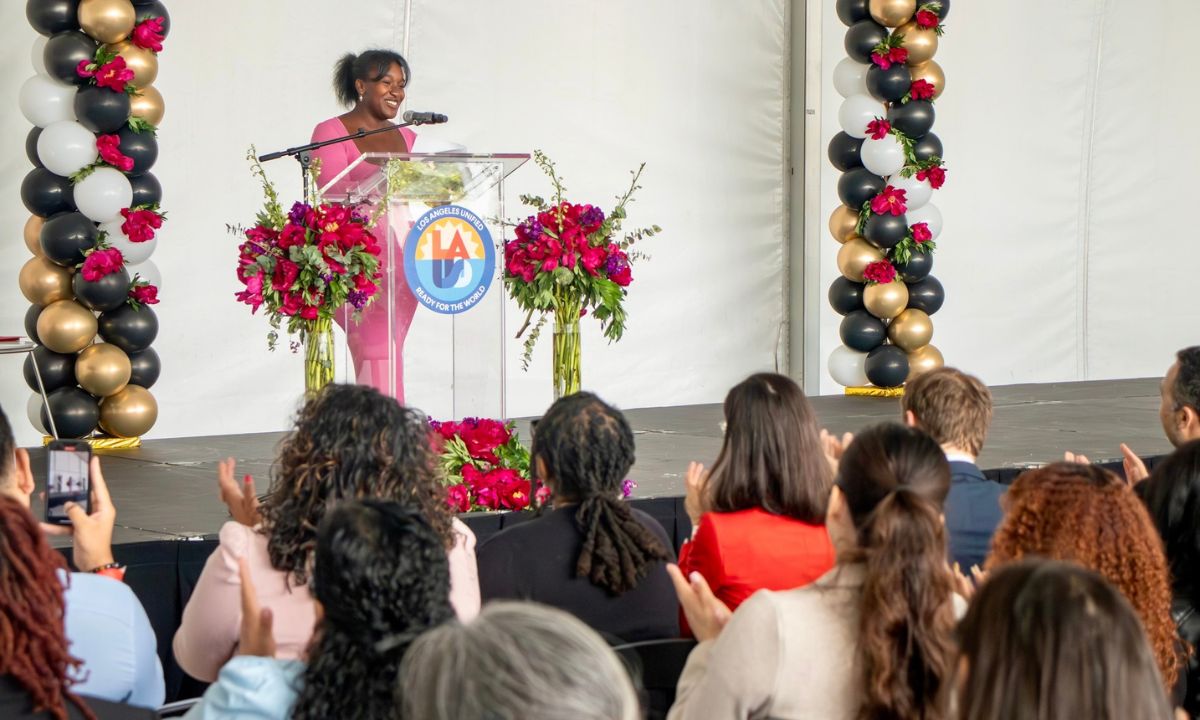‘Tip of the Iceberg’: LA Schools Chief Carvalho Warns Student Homelessness Across City Worse Than Data Shows
Carvalho said the official tally is an undercount at a ceremony to honor homeless high school graduates.

Get stories like these delivered straight to your inbox. Sign up for The 74 Newsletter
LA Unified senior Kamryn Williams is studying for finals this week — in the Chrysler sedan where she lives with her mother and their dog.
Kamryn, 18, who graduates next month from Hamilton High School in Culver City and will attend college in the fall, is one of about 15,000 homeless students enrolled in Los Angeles Unified schools — a figure that has continued to increase in the last three years after a lull during the pandemic.
“I tell myself it’s just temporary, even though it’s been going on for a while,” said Kamryn of living in the car. “When I’m at school, I do my best to try to not think about it.”
Homelessness is a worsening problem for Los Angeles students, like other urban school districts around the country, superintendent Alberto Carvalho said, which the district is struggling to address — and the official tally of declared homeless kids in the district, “is but the tip of the iceberg.”
To address the worsening crisis, Carvalho said the school system needs more help from other city agencies and nonprofits.
“The solutions for students experiencing homelessness cannot be solely the responsibility of the school district,” said Carvalho at a ceremony last week to honor graduating seniors who are homeless.
“It needs to be a community-based approach,” he said, with a “greater level of collaboration between local social agencies, city and county government alongside the school district.”
The number of homeless kids in LA schools is growing, Carvalho said. In the 2022-23 school year, LAUSD reported 9,140 homeless students, a nine percent increase from the previous academic year.
It’s the district’s first increase in homeless students since 2019, when the total increased from 18,000 to 19,000; and then fell to 7,910 in 2021 with the implementation of citywide eviction protections during the pandemic. Those protections expired in February.
The true number of homeless students is much higher than the official figure, he said, because often students do not identify themselves as homeless.
“There’s often shame,” said Carvalho, who experienced homelessness as a teen growing up in Miami. “You’re in a condition that you never thought you’d be in.”
The district is struggling with the surge, he said, because identifying homeless kids is difficult, and because city agencies don’t always collaborate on services for those kids.
Homeless teens are among the city’s most fragile students. They’re less likely to graduate on time, and more likely to suffer from trauma and mental illness.
Kamryn and her mother slid into homelessness this year after being evicted from their apartment in December, the girl said.
The pair stayed with Kamryn’s brother for a few weeks, but since January have been sleeping in their car, parking the vehicle each night beneath a tree at a city park, putting up visors against the windows for privacy.
Also participating in last week’s graduation ceremony was Janai Johnson, who in June will graduate from James Monroe High School. Janai has been homeless for most of her life and is currently living in a shelter with her mother.
“I wasn’t always sure where our next school would be,” said Janai. Stress from constantly moving made it hard to study and get enough sleep before class, she said.
Janai said homelessness “beats you down. But it’s not the things you go through – it’s how you react to those things.”
Janai said a counselor at her school helped her succeed by connecting her with a therapist and getting her school supplies. She will attend Cal State Channel Islands next year, and major in child development.
But kids like Kamryn and Janai are outliers. Homeless kids are far more likely to be chronically absent from school, and more likely to struggle academically and emotionally, Carvalho said.
To support those students, Carvalho said, LAUSD has an Homeless Education Office that provides training for school staff and direct support to students, such as access to social workers.
The district has also expanded its community school programs that offer added counseling and tutoring services to students, as well as access to campus-based food pantries and laundry services.
And in March, LAUSD opened a 26-unit housing complex for homeless families in the San Fernando Valley. The development, created through a partnership between the district, Many Mansions and Housing Works, took five years to complete.
Carvalho said the district hopes to create more housing for homeless families in the future, and that such projects shouldn’t take so long to complete. “I’m very concerned,” said Carvalho of homeless students. “They’re really facing extreme conditions.”
Get stories like these delivered straight to your inbox. Sign up for The 74 Newsletter

